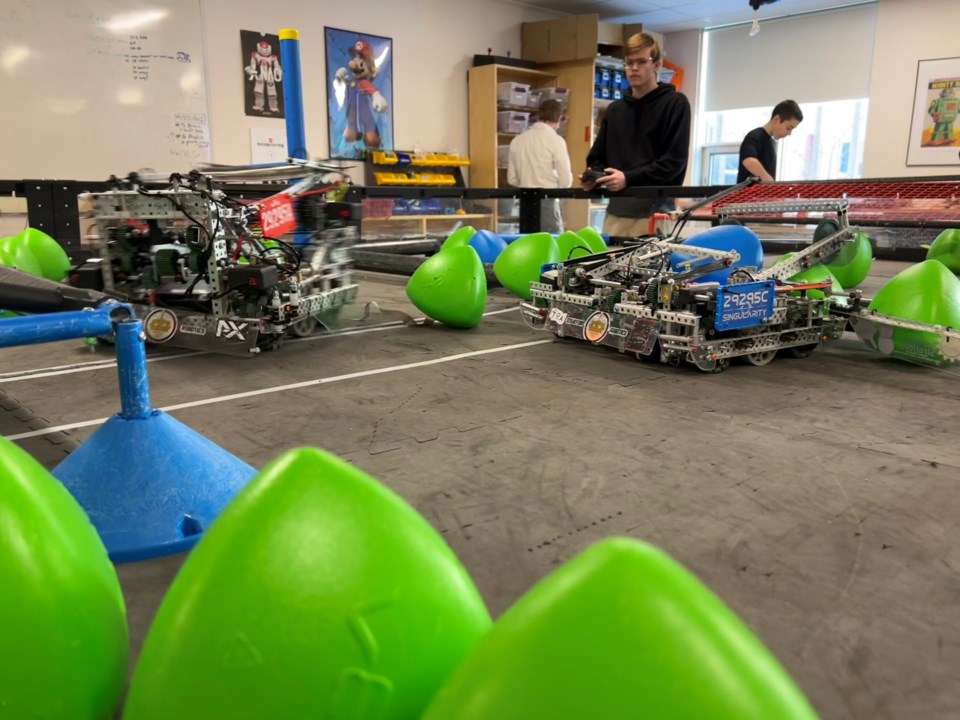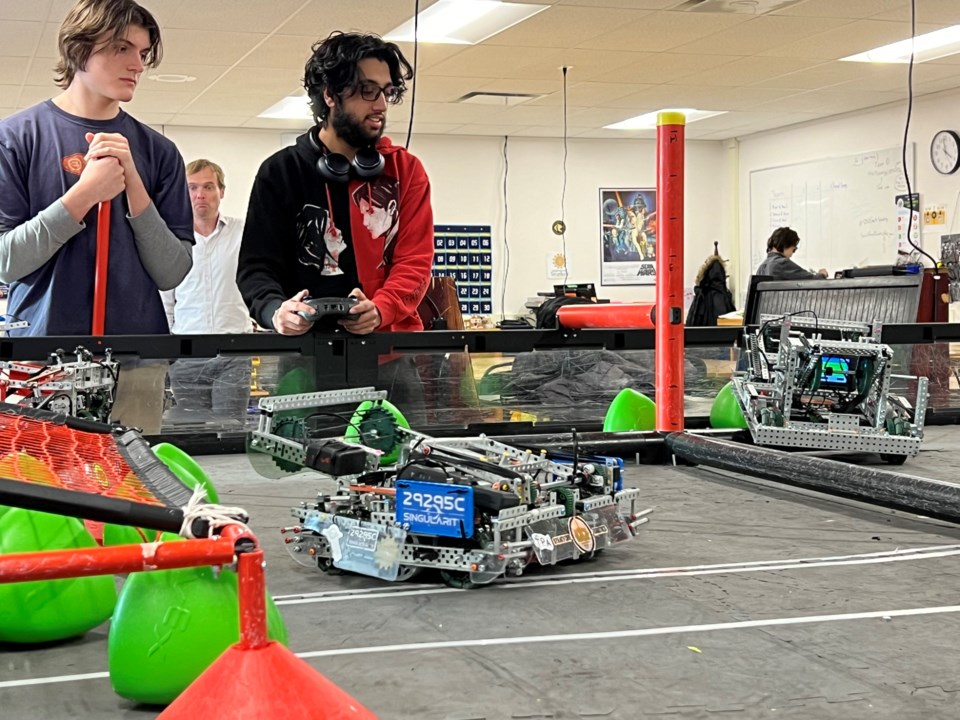Every day at 3 p.m. in Stratford, around 60 high school students get together to design robots.
And they are quite good at it.
The Robotics Club of Stratford District Secondary School (SDSS) has designed robots since before SDSS was even a school, migrating from Stratford Central Secondary School when it merged with Stratford Northwestern Secondary School in 2020.
While they were always competitive, Andrew Bradshaw, an engineering teacher at SDSS who runs the club, said that this year his students have gone above and beyond expectations.
Earlier in the year, the top team in the club ranked third in Canada and top 100 in the world.
“We were good … competitive,” Bradshaw explained. “But I mean, there were always these other schools that had that much more experience, that much more budget, that much more support,” Bradshaw said. “And we were never able to catch them. And then COVID effectively wiped out two seasons. So everybody lost all their seniors.”
With that equalizer, the SDSS Robotics Club was able to show the larger robotics world what they can do. They attended a regional competition in St. Thomas, won that, and then went to a competition in Brampton.
Bradshaw attempted to temper expectations.
“St. Thomas is smaller, we've got to go to Brampton with some big, big schools,” he told his students. “We're going up against the big guns in the province with all the schools that have three times the population of us and 15 times the budget.”
They went in and won the whole thing.
“That's when I really opened my eyes. Okay, this is special.”
VEX Robotics runs the Innovation First International, the largest robotics competition in the world, with a new game and challenge designed for students to overcome each year. It is open to students from elementary school all the way through university.
The SDSS club would like to send a team to this year's competition later this spring in Dallas, Texas.
The game this year is not so easy.
A simple square ring divided into two halves, it may have the appearance of a simple soccer-like game, with robots darting around the turf trying to score, but that is not the case at all.
Robots fire off what are called tri-balls, a rounded, pyramid-like ball that poses a unique design challenge for any robot trying to grip it.
Additionally, to score the tri-balls need to go underneath a net that is raised so that a tri-ball can just barely punch through, requiring quite a bit of force to actually break in.
Coupled with another robot in the small ring and it being a full-contact sport, it is nothing if not complicated.
The 60 students are divided into four teams, each designing their own robot to compete in the challenge.
Team A, led by Nathaniel Smith, is currently leading the charge. As of publication, it ranks 131st in the world out of over 20,000 participating teams.
Their design was based on having two ways of firing off the tri-balls, a catapult and a puncher, meant to give their robot options when faced with different components. That forward thinking won them a design award in the last competition they attended in Brampton.
But Smith said that forward thinking was also better in theory than practice.
“In-game it's not super efficient,” Smith explained. “I found through match play we almost never used (the catapult).”
Now, they are doing a redesign, a complete new build to focus on some areas that they noticed could be improved upon in competition, like speed. They have swapped out for smaller tires in the middle in order to have less traction and resistance.
But those inefficiencies only speak directly to one of Bradshaw’s lessons.
“The difference between you and a professional engineer is (probably not) intelligence, it's experience,” he relayed. “Failure is a required point of learning. If you're not failing, you're not pushing yourself.”
Sebastien Chung, leader for Team C, said that they have prioritized speed and nimbleness in their design.
About half the height of Team A’s design, Chung explained that their thinking was to have something small enough that it could go underneath the nets and punch more tri-balls into the net to score.
As missed tri-balls lay in front of the score net, the robot extends two wide arms that can collect them and pack them tightly into the net.

“A lot of teachers say that they have a challenge getting their kids to do work,” Bradshaw said. “I have a challenge getting my kids to stop.”
With most of his students wanting to pursue engineering in university, competing in these competitions is a huge boon to their chances. Universities and corporations alike send people to scout talent.
Google, Amazon, even NASA are known to go to these competitions, on the lookout for the best and brightest.
Although being hired right out of high school is not going to be everyone’s future, Bradshaw said that it is important for students to get experience networking and bumping shoulders.
Bradshaw has had to turn down two major competitions so far this year, simply due to a lack of funds: the national championships in Edmonton and the U.S. Open in Iowa.
Now that the Robotics Club is close to qualifying for the world competition, it would be a hard pill to swallow to say no to that competition as well.
With that in mind, the Robotics Club is looking for donations and sponsorship.
Bradshaw said that the community has stepped up in the past, with sponsorship from the former D&D Automation, Curtiss-Wright, and MVA Stratford Inc. Now, it is just about having that support when they need it again.
“This is the future,” Bradshaw said. “It’s an investment in Stratford’s high tech.”
Anyone interested in donating to the Robotics Club can contact Bradshaw through his email: [email protected].



